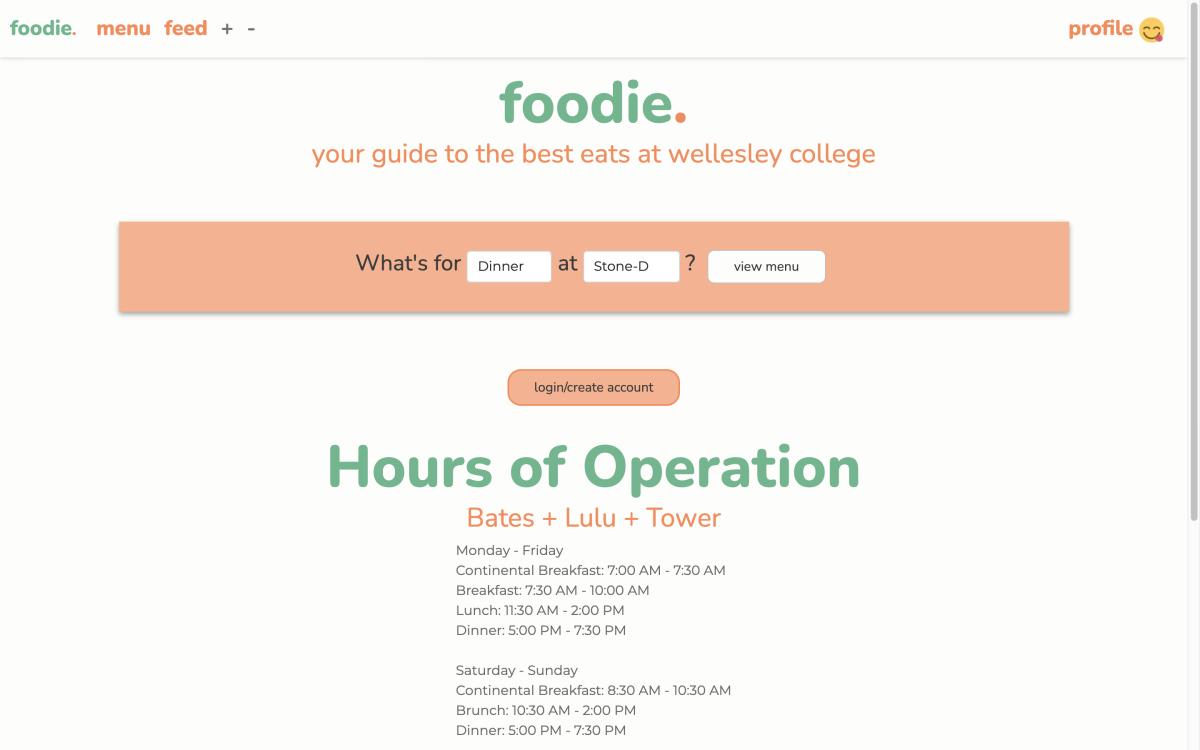At the end of April, a group of students who took CS 304: Databases with Web Interfaces in Term 3 launched a website for Wellesley students to track dining hall menus and leave reviews for meals. The website, Foodie, crowdsources information on what food can be found where and when.
“I think we all vaguely had some idea about doing food or something related, maybe doing something specifically for Wellesley,” Sara Clark ’22 said. “The first Zoom call we had all together was like, ‘Yeah, let’s just take this one idea,’ and we just kind of ran with it.”
The group consisted of Clark, Fangwen Xia ’23, Gigi Gabeau ’21 and Leah Teffera ’22, who are all studying computer science (CS) related subjects. With the guidance of CS Professor Scott Anderson, CS 304 students created a website that collects and stores data as a term-long project.
“We were supposed to create our own database and then use our coding skills to extract information and store information into the database,” Xia said. “So for our project, our database is all the food entries in the comments.”
The group creating Foodie decided to release their website to the public after Term 3 ended in order to make it available to the Wellesley community.
“It’s supposed to be a social app, and it’s supposed to be for the Wellesley community, so it felt weird to not deploy it,” Teffera said.
The group met with Anderson, who guided them through the process of deployment. According to Anderson, most groups in CS 304 choose not to deploy their websites, although in the past, other websites that have been made available include one that allows users to browse images of dorm rooms and another that displayed a school-wide events calendar. Foodie is the first of its kind, but some projects have been repeated over the years.
“A perennial favorite is Free and For Sale,” Anderson said. “The Facebook group is not organized; things get buried; things don’t get taken down; everybody complains about it.”
The overall goal of these projects is to create something new to solve problems in current systems. The group members stated that Foodie creates a more social and collaborative experience for students than Dish AVI.
“I think what’s unique about it, compared to how Wellesley Fresh is currently used, is the fact that you can review different menu items,” Gabeau said. “Thinking of long-term goals, it’d be really cool if we could use the app to collaborate between students and dining hall workers.”
Since the website can only display menus if users manually add them, it relies on a steady user base to function consistently. Any Wellesley student can create an account on the website by logging in through the Wellesley secure sign-on function, similar to how students log into Workday or Zoom.
“Once a couple people use it, more and more people will start using it,” Gabeau said. “Once everyone’s using it, that’s when it’ll be the most effective, because everyone will be contributing to it.”
In the future, the group hopes to keep the website up, especially since most students will be on campus in the fall, which could help increase usage.
“The plan is to maintain the website and applications as it is right now, just addressing any issues that come in, maybe improving the website based on what other people say,” Teffera said.
Although the website is not widely used yet, the group members expressed gratitude that some members of the Wellesley community have started.
“Even if they don’t integrate it into their daily life and use it after every single meal, it’s still, at the end of the day, satisfying just to know someone read a comment that made them laugh,” Clark said.






